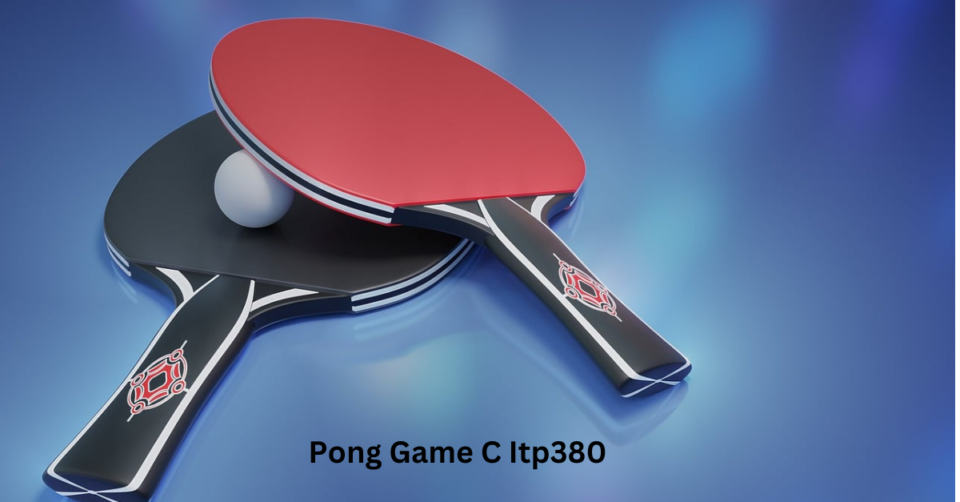The world of video games has come a long way, but it owes much of its roots to a humble yet iconic game: Pong. This simple, two-dimensional tennis game has inspired countless programmers to recreate and innovate upon its mechanics, especially in academic and learning settings. One notable implementation that resonates with students and developers alike is the Pong Game C Itp380.
In this article, we’ll delve into the significance of Pong, its development using C programming, and its integration into the ITP380 curriculum. This guide will help you understand why this game is an excellent gateway to learning programming and game development.
What is Pong?
Before diving into its programming aspects, let’s explore the history and mechanics of Pong.
A Brief History
Pong, one of the earliest arcade video games, was created by Atari Inc. in 1972. Designed as a table tennis simulation, the game consists of two paddles and a ball. Players control the paddles to bounce the ball back and forth, earning points when their opponent misses.
Why Pong?
Despite its simplicity, Pong became a cultural icon for its accessibility and addictive gameplay. It also served as an entry point for budding developers to understand game physics, collision detection, and user input handling.
ITP380: The Relevance of Pong in Game Development Education
About ITP380
ITP380, a popular university course focused on interactive programming, introduces students to game design and development. Using foundational games like Pong, the course bridges theoretical concepts and practical programming skills.
Pong as a Teaching Tool
The Pong game is often assigned as a beginner project in courses like ITP380 for several reasons:
- Simplicity: The game mechanics are easy to understand yet challenge students to implement core programming concepts.
- Scalability: Developers can expand on Pong by adding features like AI opponents, score tracking, and advanced graphics.
- Hands-On Learning: Students can apply object-oriented programming (OOP) principles, event handling, and real-time processing.
Writing Pong Game C Itp380: A Step-by-Step Approach
Developing Pong Game C Itp380 provides a hands-on way to learn programming essentials. Below is a structured overview of creating the game.
1. Setting Up the Environment
To develop Pong, you’ll need:
- A C compiler (e.g., GCC, Clang).
- A text editor or IDE (e.g., Visual Studio Code, Code::Blocks).
- Libraries like SDL2 for graphics and input handling.
2. Structuring the Game
Divide the game into manageable components:
- Main Function: Handles initialization and game loop.
- Player Input: Captures keyboard or controller input to move paddles.
- Physics: Manages ball movement, collision detection, and scoring.
- Rendering: Draws paddles, ball, and score on the screen.
3. Adding Features
Enhance the game with features like:
- AI Opponent: Program a paddle to move autonomously using simple algorithms.
- Dynamic Speed: Gradually increase ball speed to add difficulty.
- Enhanced Graphics: Incorporate textures and animations for a polished look.
Challenges of Developing Pong in C
While Pong may seem straightforward, programming it in C can present challenges:
- Manual Memory Management: C lacks garbage collection, requiring developers to carefully allocate and deallocate memory.
- Real-Time Input Handling: Ensuring smooth paddle movement and ball physics demands precision.
- Debugging: Identifying and fixing bugs in collision detection or game logic can be tricky.
However, overcoming these challenges is part of the learning process, making you a better programmer.
The Educational Value of Pong Projects
Pong is more than just a game; it’s a foundational exercise in programming. Here’s how working on Pong can benefit students:
1. Strengthening Fundamentals
Developing Pong reinforces core programming skills like loops, conditionals, and functions.
2. Introducing Game Physics
Collision detection and ball trajectory introduce students to basic physics simulations.
3. Encouraging Creativity
Once the basic game is complete, students can innovate by adding features or reimagining the game’s mechanics.
Beyond Pong: Expanding Knowledge in Game Development
Pong is a stepping stone for more complex projects. After mastering Pong, students can:
- Create games with 3D graphics using engines like Unity or Unreal Engine.
- Explore advanced physics simulations.
- Develop multiplayer games with networking capabilities.
The skills acquired while building Pong form the foundation for these advanced pursuits.
Tips for Success in Programming Pong
If you’re tackling Pong as a project, keep these tips in mind:
- Plan Before Coding: Outline game mechanics, input methods, and screen layouts before starting.
- Start Small: Focus on implementing basic mechanics before adding features.
- Test Frequently: Debug as you go to catch issues early.
- Leverage Resources: Use online tutorials, forums, and documentation for guidance.
The Legacy of Pong in Modern Gaming
Pong Game C Itp380 influence extends far beyond its original arcade form. Its legacy is visible in:
- Game Design Principles: Many modern games borrow Pong’s simplicity and accessibility.
- Educational Projects: Pong remains a popular choice for introducing programming and game development.
- Cultural Impact: As a pioneer, Pong paved the way for the multi-billion-dollar gaming industry.
Conclusion
The Pong Game C Itp380 represents a timeless learning experience for aspiring developers. From teaching basic programming concepts to fostering creativity, Pong serves as both a challenge and an inspiration. By embracing projects like this, students not only develop technical skills but also gain a deeper appreciation for the art of game development.
Whether you’re a beginner or an experienced coder, building Pong is a rewarding journey that connects the past and future of gaming. So, dive into your development environment, bring Pong to life, and take your first step toward mastering the world of interactive programming.

